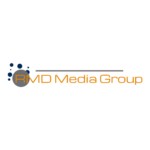
Client Acquisition and Retention 101
The lifeblood of any business, particularly in the realm of marketing services, flows through its ability to attract and keep clients. Client acquisition garners fresh opportunities, laying the groundwork for growth, while retention nurtures and maximizes the value of these relationships over time. Together, they form a dynamic strategy essential for robust business development.
Defining Client Acquisition and Retention
The journey to business growth begins with understanding the twin pillars of client engagement: acquisition and retention. Client acquisition is the lifeblood of any business, representing the initial connection between a potential customer and a company. Its significance in business strategy cannot be overstated, as it encompasses the tactics and methodologies employed to attract new clients. This stage is critical, as it sets the tone for the relationship and can influence the trajectory of the company’s growth.
Equally vital to the health of a business is client retention, which sustains success by nurturing and maintaining existing relationships. Retention strategies are designed to keep clients engaged, satisfied, and loyal over time.
Measuring Success in Acquisition and Retention
In the dynamic landscape of client relationships, the ability to track and analyze the successes of client acquisition efforts stands as a cornerstone of strategic business planning. Businesses rely on a blend of quantitative and qualitative measures to gauge the effectiveness of their outreach and engagement initiatives. This process goes beyond mere number-crunching; it provides insights into the quality of connections being formed with potential clients.
Turning to client retention, the metrics employed serve as the litmus test of a business’s long-term viability. Retention rates act as a reflection of customer satisfaction and loyalty, a direct outcome of the experiences provided by the business. To compute this pivotal rate, firms adopt formulas that consider the number of clients at the start of a period, the number left at the end, and the new ones acquired in between. The resulting percentage offers a clear view of the business’s ability to maintain its client base over time.
By understanding these metrics, businesses can refine their strategies, ensuring they are not just filling a funnel but nurturing relationships that will stand the test of time.
Strategies for Acquiring Clients
In the pursuit of sustainable business growth, mastering the art of client acquisition is paramount, especially for those offering marketing services. The cornerstone of effective acquisition is a strategy that not only draws in new clients but also resonates with their aspirations.
With the rise of the digital age, businesses have at their disposal a vast array of digital platforms to leverage for client acquisition. Social media serves as a dynamic stage for engaging potential clients, while organic and paid search strategies elevate the visibility of services to those actively seeking solutions. Email campaigns, when executed with precision, can nurture leads over time, transforming interest into commitment. Moreover, third-party sites offer additional avenues to showcase services to a broader audience.
Yet, beyond these digital strategies, the significance of personalized outreach cannot be overstated. Establishing a connection through expert advice and personalized communication fosters trust and demonstrates a commitment to addressing the unique needs of each client.
Strategies for Retaining Clients
In the realm of client relationships, retention stands as a testament to a business’s ability to not only meet but exceed expectations. Maintaining and nurturing existing client relationships is paramount. A business thrives on its ability to keep clients engaged, satisfied, and connected to the services it offers.
By offering tailored advice and up-to-date information, businesses can affirm their commitment to the client’s growth and success. This cultivates an environment of trust and reinforces the client’s decision to continue the partnership.
Effective client engagement channels are critical in this endeavor. Communication tools such as email, phone, text, and website chat serve as bridges connecting the client to the business. They must be employed thoughtfully and strategically, ensuring that each interaction adds value and strengthens the bond between the client and the service provider.
Furthermore, educational and networking events emerge as powerful avenues for deepening client relationships. These events provide immersive experiences that can enhance the client’s knowledge base, offer networking opportunities, and demonstrate the business’s dedication to their clients’ long-term goals. The value provided through these events often translates into strengthened connections and heightened loyalty.
Ultimately, the fusion of actionable retention strategies with effective communication channels and enriching events leads to a robust framework for client retention. Such a framework not only supports the current client base but also sets a precedent for potential clients, showcasing the enduring value the business provides.
Resources and Tools for Scaling Strategies
Business growth hinges not just on initial client acquisition and retention, but also on the ability to scale these efforts effectively. Utilizing the right tools and technologies can streamline the process of acquiring new clients while ensuring that efforts are cost-effective and yield high returns. Similarly, deploying strategic resources can significantly bolster client retention, ensuring that the hard-won clients remain engaged and loyal to the brand.
For businesses seeking to expand their clientele, a variety of digital tools offer robust solutions. Customer Relationship Management (CRM) systems, for instance, are indispensable for tracking interactions with potential and current clients, providing a database for targeted marketing campaigns and personalized communication. Automation platforms can take routine tasks off your plate, allowing your team to focus on strategy and personal connections. Furthermore, analytics tools bring critical insights into customer behavior and campaign performance, guiding data-driven decisions that optimize acquisition strategies.
On the flip side, client retention thrives on a foundation of consistent engagement and added value. Loyalty programs, which can be seamlessly integrated into a business’s service offerings, offer incentives that can turn satisfied clients into brand advocates. Feedback mechanisms, such as surveys and review prompts, not only provide valuable insights for business improvement but also signal to clients that their opinions are valued, thus fostering a sense of community and belonging.
Ultimately, the synergy between acquisition and retention tools is what propels a business forward. Investing in technologies that save time and resources while enhancing client relationships is an investment in the business’s future.
